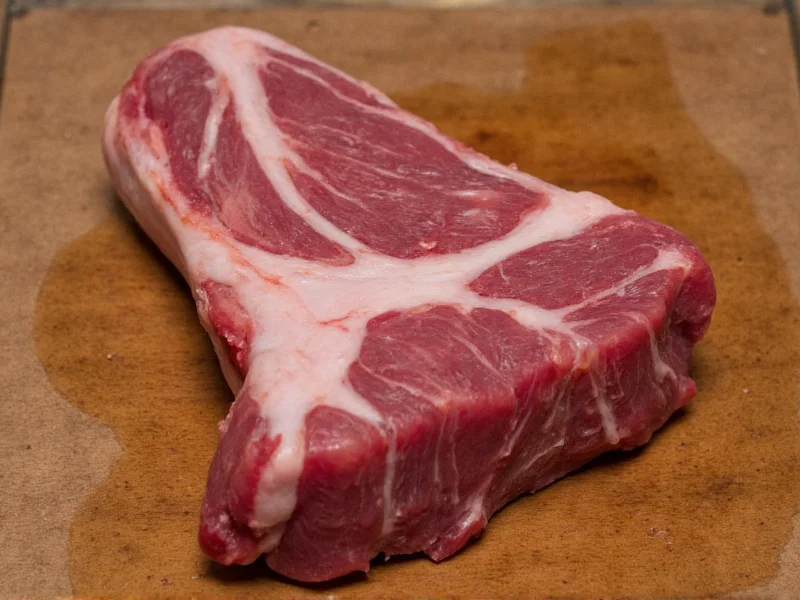Essential Components of an Exceptional Lamb Chop Rub
Creating the ideal seasoning blend for lamb chops requires understanding which flavors complement lamb's rich, slightly gamey character. Unlike milder meats, lamb can handle bold seasonings while still allowing its distinctive taste to shine through.
The foundation of any successful lamb chop seasoning rub includes:
- Salt - Essential for flavor enhancement and moisture retention
- Freshly ground black pepper - Adds complexity and subtle heat
- Aromatic herbs - Rosemary, thyme, and oregano provide earthy notes
- Warm spices - Garlic powder, onion powder, cumin, and paprika
- Acid component - Optional lemon zest or sumac for brightness
When crafting your homemade lamb chop rub recipe, remember that balance is crucial. Too much of any single ingredient can overwhelm lamb's distinctive flavor. The ideal ratio typically features 3 parts salt to 1 part other dry ingredients.
Classic Lamb Chop Rub Formulations
Different culinary traditions offer distinctive approaches to seasoning lamb. These proven lamb chop spice blend recipes deliver restaurant-quality results:
| Rub Type | Key Ingredients | Best Cooking Method | Marinating Time |
|---|---|---|---|
| Mediterranean Herb | Rosemary, thyme, garlic, lemon zest, olive oil | Grill or broil | 2-4 hours |
| Middle Eastern | Cumin, coriander, sumac, paprika, cinnamon | Pan-sear or grill | 4-12 hours |
| Simple Classic | Salt, pepper, garlic powder, onion powder | Any method | 30 min-2 hours |
| Spicy Harissa | Harissa paste, cumin, smoked paprika, garlic | Grill or cast iron | 2-6 hours |
Application Techniques for Maximum Flavor
How you apply your lamb chop dry rub significantly impacts the final result. Follow these professional techniques:
- Dry the surface - Pat chops thoroughly with paper towels before applying rub
- Oil lightly - A thin coat of olive oil helps the rub adhere without creating steam
- Press gently - Don't rub vigorously, which can damage the meat's surface
- Cover all surfaces - Include the fat cap and bone side for complete flavor
- Refrigerate uncovered - Allows the surface to dry slightly for better searing
For those wondering how long to leave rub on lamb chops, the sweet spot is 2-4 hours for most dry rubs. Extended marinating (beyond 12 hours) with salt-heavy rubs can make the texture slightly spongy. Acid-based rubs (with lemon juice or vinegar) should only remain on the meat for 30-60 minutes to prevent partial cooking of the surface.
Avoiding Common Lamb Chop Rub Mistakes
Even experienced cooks make these frequent errors when preparing seasoned lamb chops:
- Over-salting - Remember that salt continues to penetrate during cooking
- Using pre-ground spices - Freshly ground spices provide significantly brighter flavor
- Applying cold meat to hot surface - Bring chops to room temperature before cooking
- Skipping the rest period - Let chops rest 5-7 minutes after cooking for juicier results
- Using wet rubs for high-heat methods - Sugar content can burn during grilling or searing
The ideal lamb chop seasoning ratio balances salt (about 1 teaspoon per pound), herbs (1-2 tablespoons total), and spices (1-2 teaspoons total). Adjust according to your specific cut—thicker loin chops can handle bolder seasoning than delicate rib chops.
Perfect Pairings for Rubbed Lamb Chops
Complete your meal with these complementary sides that enhance your perfectly seasoned lamb chops:
- Mint pesto - Classic pairing that cuts through richness
- Rosemary roasted potatoes - Echoes the herbal notes in many rubs
- Grilled asparagus - Provides a clean, green contrast
- Tzatziki sauce - Offers cooling contrast to spicy rubs
- Full-bodied red wine - Cabernet Sauvignon or Syrah complement seasoned lamb beautifully
When serving your restaurant-style lamb chops at home, remember that the rub should enhance rather than mask lamb's distinctive flavor. The best seasoning blends create a flavorful crust while allowing the meat's natural richness to shine through.
Frequently Asked Questions
How long should I let the rub sit on lamb chops before cooking?
For optimal flavor development, apply your lamb chop rub 2-4 hours before cooking. This allows sufficient time for the seasonings to penetrate without making the meat texture spongy. For salt-heavy rubs, don't exceed 12 hours. Acid-based rubs (with lemon juice or vinegar) should only remain on the meat for 30-60 minutes to prevent surface cooking.
What are the best herbs to include in a lamb chop rub?
Rosemary and thyme are the classic herb pairings for lamb chop rubs, complementing lamb's rich flavor perfectly. Oregano, mint, and sage also work exceptionally well. For Mediterranean-style rubs, use fresh rosemary and thyme. For Middle Eastern blends, dried mint and oregano provide authentic flavor. Always use dried herbs in rubs (not fresh) to prevent moisture that would prevent proper searing.
Can I use the same rub for both lamb chops and other meats?
While some basic rub components work across meats, lamb benefits from specific flavor profiles. Lamb's distinctive richness handles bolder seasonings than chicken or pork. A rub designed specifically for lamb chops typically contains more robust herbs (rosemary, thyme) and warm spices (cumin, coriander) that would overwhelm more delicate meats. For best results, maintain separate rub formulations tailored to each protein type.
Should I add oil to my dry rub for lamb chops?
Traditional dry rubs for lamb chops shouldn't contain oil in the rub mixture itself. Instead, lightly coat the chops with olive oil before applying the dry rub. This helps the seasoning adhere without creating excess moisture that would prevent proper searing. Oil in the rub mixture can cause the spices to burn during high-heat cooking methods like grilling or pan-searing.











 浙公网安备
33010002000092号
浙公网安备
33010002000092号 浙B2-20120091-4
浙B2-20120091-4